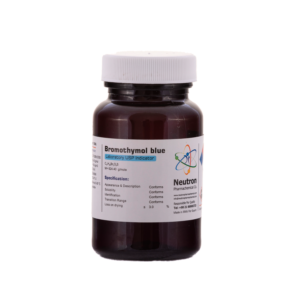Thymolphetaleine
🏭⚗️ Synthesis
Thymolphthalein is synthesized through the condensation reaction of phthalic anhydride with thymol, typically in the presence of a strong acid catalyst. The resulting product is a white to slightly yellowish powder that exhibits strong pH-dependent optical properties. It remains colorless in solutions with a pH below 9.0 and turns deep blue above pH 10.5. The compound shows an absorption maximum between 592–596 nm at pH 10.5, with a high molar extinction coefficient of 38,000 M⁻¹·cm⁻¹ at 595 nm.
🧪 Applications
Thymolphthalein has a variety of applications due to its chemical sensitivity and optical properties. It is commonly used as a pH indicator, showing a clear color transition from colorless to blue within the pH range of 9.0 to 10.5, making it suitable for analytical and educational purposes.
In electrochemical sensing, thymolphthalein has been electropolymerized onto electrodes modified with multi-walled carbon nanotubes (MWCNTs), enabling the voltammetric determination of total isopropylmethylphenols, such as thymol and carvacrol, in spices with high sensitivity.
In coordination chemistry, thymolphthalein-based probes exhibit fluorescence enhancement upon binding to zinc ions, which allows their use in metal ion detection and fluorescence sensing systems.
For biological applications, thymolphthalein has been integrated into a pH-triggered visual detection system for Escherichia coli, where the co-assembly with bacitracin allows for simple and effective bacterial identification based on a color change.
Additionally, thymolphthalein has been incorporated into novel polybenzoxazine materials, resulting in composites with enhanced thermal stability, superhydrophobicity, and improved dielectric properties, demonstrating its potential in the development of high-performance functional materials.



